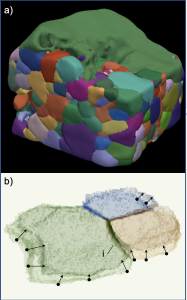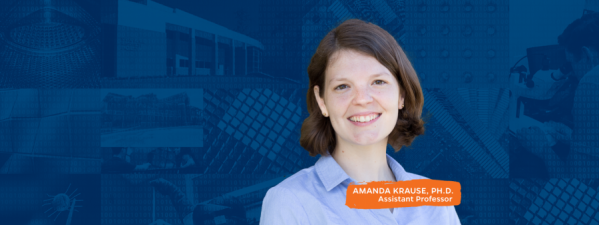Amanda Krause, Ph.D., assistant professor in the UF Department of Materials Science & Engineering, is employing artificial intelligence methods to track and catalogue data for her abnormal grain growth research, and thanks to new a $1.2 million research award from the National Science Foundation’s (NSF) Major Research Instrumentation (MRI) program, she will bring a cutting-edge, 3D X-ray microscope system to campus to generate even better data for her algorithms.

“The Zeiss Xradia 620 Versa Computed Tomography (Versa nanoCT) will not only provide the data used to train the machine learning algorithm, but it will also give us a three-dimensional look inside rare and unique specimens without destroying them,” said Dr. Krause, principal investigator for the NSF award. “Currently, we have to compare different samples to draw conclusions about how a material behaves. With this tool, we can actually observe a single sample evolve over time to gain better insight into fundamental processes.”
The system provides nano-scale 3D imaging of the internal and external features of both organic and inorganic specimens and is a substantial boost to UF research capabilities. With its versatile design and ability to provide the visual data deemed essential for identifying both the critical microstructural features in materials processes and the morphological aspects of biological specimens, the new instrument will offer new research opportunities in a variety of scientific fields including materials science, vertebrate zoology and biomedical engineering.
The Versa nanoCT’s capabilities in dealing with organic materials are why co-investigator Edward Stanley, Ph.D., associate scientist with the Florida Museum of Natural History and Director of the Digital Discovery and Dissemination Laboratory, is eager to put the unit to work
“I’m very excited about the new research this machine will facilitate at the Florida Museum of Natural History and throughout the UF research community as a whole,” Dr. Stanley said. “With its ability to produce much higher resolution scans than the current CT machine, the benefits will be felt most keenly in the divisions that have a lot of small specimens, such as entomology. All divisions will be able to make use of its increased capabilities – particularly the oVert program, our NSF-funded program which provides free, digital 3D models and data to researchers, educators, students and the public.”
“But what I am most proud of with this grant,” continued Dr. Stanley, “is the sheer diversity of users we are able to include: 20 different departments from eight colleges or institutes representing a wide diversity of UF research. I hope that this new system will help encourage further cross-disciplinary collaborations at UF.”
The Versa nanoCT will be located at UF’s Research Service Centers and the data collected by it will then be shared through open-source networks and field-specific databases to help enable broad-scale data research initiatives. Additionally, the acquired data will be implemented in graduate, undergraduate and high-school education curriculum and will also complement 3D machine learning development initiatives.

